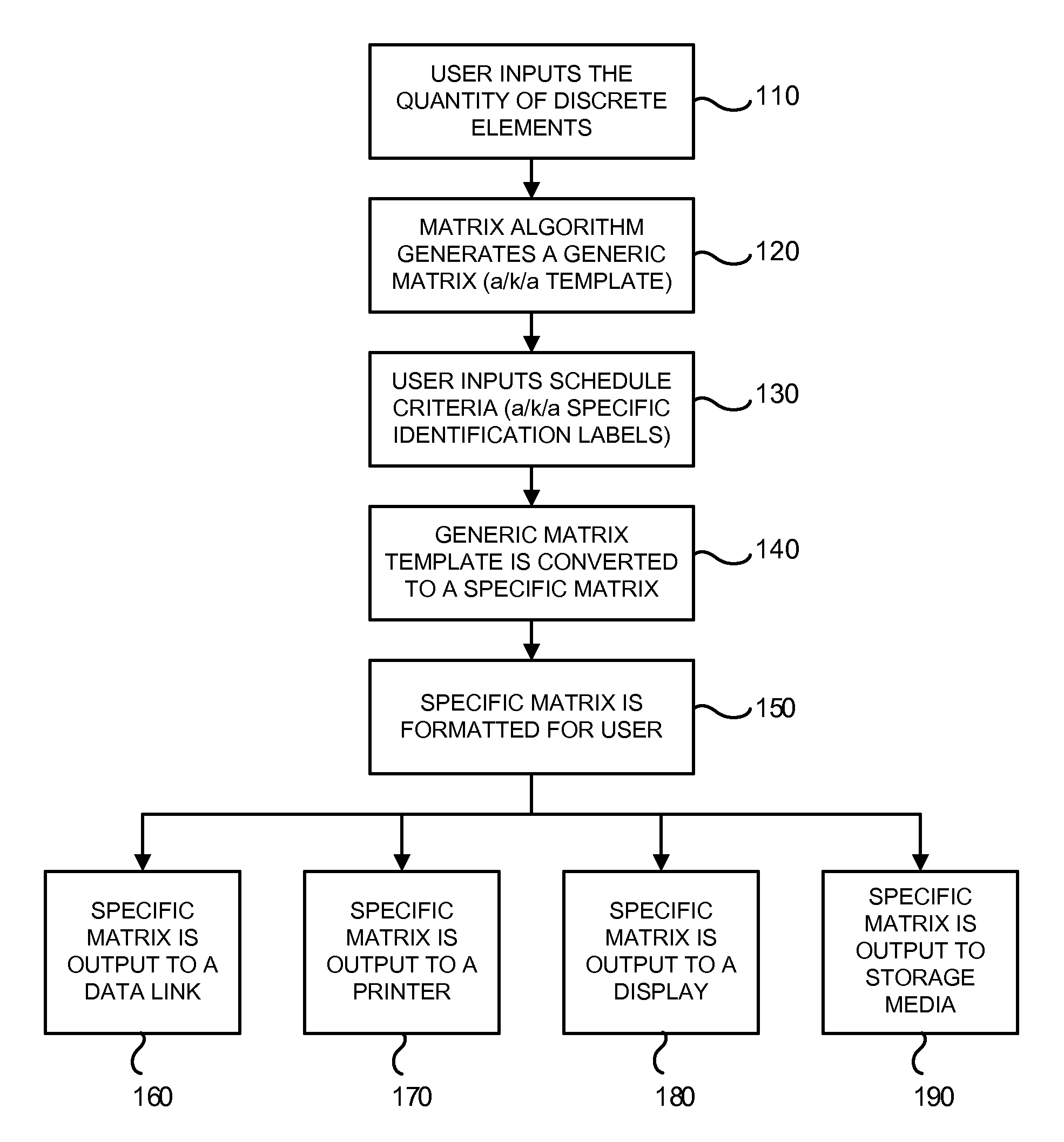System and method for scheduling
a scheduling system and scheduling technology, applied in the field of scheduling, can solve the problems of lack of order, inability of the human mind to simultaneously process all possible combinations, and limited end product of manual scheduling to the most basic schedul
- Summary
- Abstract
- Description
- Claims
- Application Information
AI Technical Summary
Benefits of technology
Problems solved by technology
Method used
Image
Examples
Embodiment Construction
[0059]Before disclosing embodiments of the invention in detail, it is to be understood that the invention is not limited in its application to the details of the particular arrangement shown since the invention is capable of other embodiments. Also, the terminology used herein is for the purpose of description and not of limitation.
[0060]The generic matrix algorithm may be or include a software engine that is configured to create a generic matrix. Some applications may require multiple schedules; in this instance, a user could create multiple generic matrices. For each generic matrix, a user enters the total number of discrete elements to be scheduled. Each generic matrix includes a series of arrays. Each array includes the same set of generic discrete elements (e.g., the discrete elements could be integers 1, 2, . . . n) but has a unique set of discrete element pairings. The resulting generic matrix could be a one-pass combination schedule, a one-pass permutation schedule, or multi...
PUM
 Login to View More
Login to View More Abstract
Description
Claims
Application Information
 Login to View More
Login to View More - R&D
- Intellectual Property
- Life Sciences
- Materials
- Tech Scout
- Unparalleled Data Quality
- Higher Quality Content
- 60% Fewer Hallucinations
Browse by: Latest US Patents, China's latest patents, Technical Efficacy Thesaurus, Application Domain, Technology Topic, Popular Technical Reports.
© 2025 PatSnap. All rights reserved.Legal|Privacy policy|Modern Slavery Act Transparency Statement|Sitemap|About US| Contact US: help@patsnap.com



